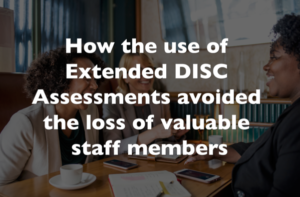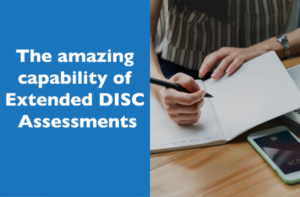Employee satisfaction has a direct impact on productivity, retention and overall business performance. Happy, motivated employees work harder, stay longer and contribute positively to organisational culture. High turnover, on the other hand, costs businesses time, money and momentum. Well-known organisations such as Google and Apple thrive partly because they invest in understanding what people need to succeed. One powerful tool for supporting this is using DISC to increase employee satisfaction.
A DISC assessment helps identify individual needs, preferred work styles and motivators. When businesses understand these drivers, they can create environments where employees feel supported and able to perform at their best. The result is higher engagement, improved retention and a stronger organisational culture.
Why Employee Motivation Matters
Distracted or disengaged employees consistently underperform. Bain & Co found that dissatisfied employees operate at only 71% of the efficiency of satisfied employees. Fully engaged employees are 44% more productive than simply satisfied staff, and inspired employees outperform the “satisfied” group by an incredible 125%.
Dr Rowarth summarised this impact clearly:
- It takes three dissatisfied employees to match the output of two satisfied employees.
- One inspired employee produces more than three dissatisfied or two satisfied employees.
With more than 75% of employees exploring other job opportunities, productivity is often at risk long before someone resigns.
Hudson’s research also revealed that 13% of employees leave within the first three months, primarily due to:
- Poor cultural fit (30%)
- A manager who didn’t meet expectations (36%)
- A job that didn’t match the description (62%)
These issues highlight the need for accurate behavioural and role-fit insights. Many roles are oversold, leading employees to feel unstimulated or disconnected almost immediately.
A Real-World Case: When DISC Transformed Employee Retention
One of our consultants, John, experienced this firsthand while supporting a medium-sized Australian manufacturing company. The organisation struggled to retain new recruits, losing 23% of new hires within their first six months.
John discovered that the business had not used any psychometric tools in hiring. His first step was to obtain a DISC assessment from all staff, including managers. He then:
- Generated team reports for each department
- Compared management styles across departmental leaders
- Analysed each manager’s performance against behavioural preferences
- Assessed all new candidates using DISC during a six-month period
By integrating DISC into recruitment and reviewing job fit and team compatibility, the company reduced early turnover from 23% to zero.
Even better, after repositioning dissatisfied employees into roles that aligned with their natural style, departmental productivity increased by 17.5%.
Why DISC Helps Improve Employee Satisfaction
Understanding how employees naturally behave and what motivates or stresses them—makes communication significantly easier. DISC helps managers:
- Predict how each person will respond in different situations
- Adjust communication and leadership approaches
- Identify development areas
- Understand conflict triggers
- Determine the best motivators for each style
Because each DISC personality type responds differently, using DISC to increase employee satisfaction helps managers create tailored strategies for engagement, performance and retention.
Practical Ways to Use DISC to Increase Employee Satisfaction
Here are a few proven approaches:
1. Improve job fit
Use DISC to match behavioural style with role expectations.
2. Increase team compatibility
Combine DISC insights with team reports to ensure balance and reduce friction.
3. Enhance communication
Teach managers how each style prefers to receive information, feedback and direction.
4. Boost motivation
Identify each employee’s motivators and tailor rewards or recognition accordingly.
5. Reduce turnover
Improve the recruitment process by evaluating behavioural fit before hiring.
The Bottom Line
We have seen countless examples where productivity, job satisfaction and workplace culture improved significantly after integrating Extended DISC® methodology. By focusing on job fit, communication, team dynamics and management styles, organisations can reduce turnover, boost engagement and build a happier, more productive workforce.
Ready to Improve Employee Satisfaction?
Use Extended DISC® to understand your people, reduce turnover and build a more motivated, productive team.







